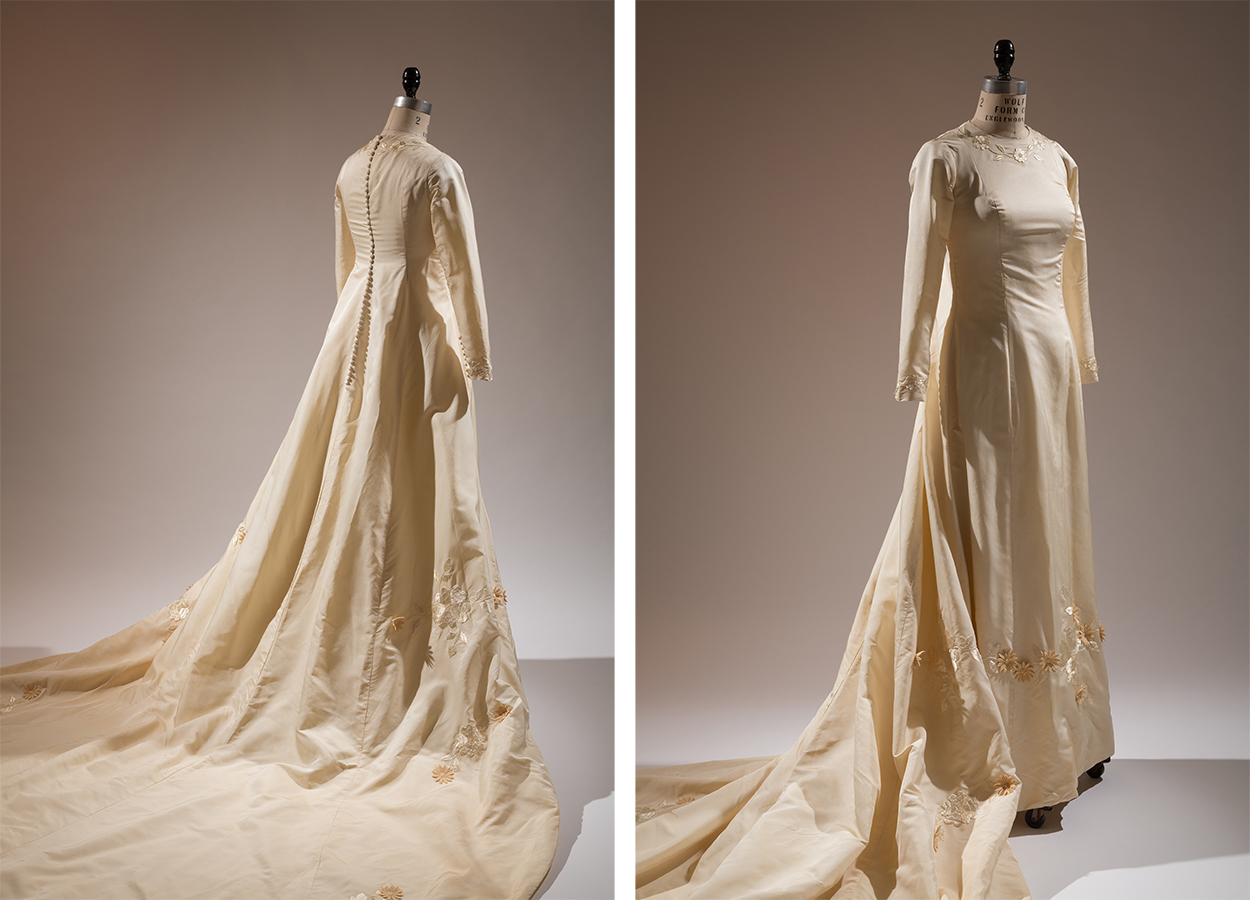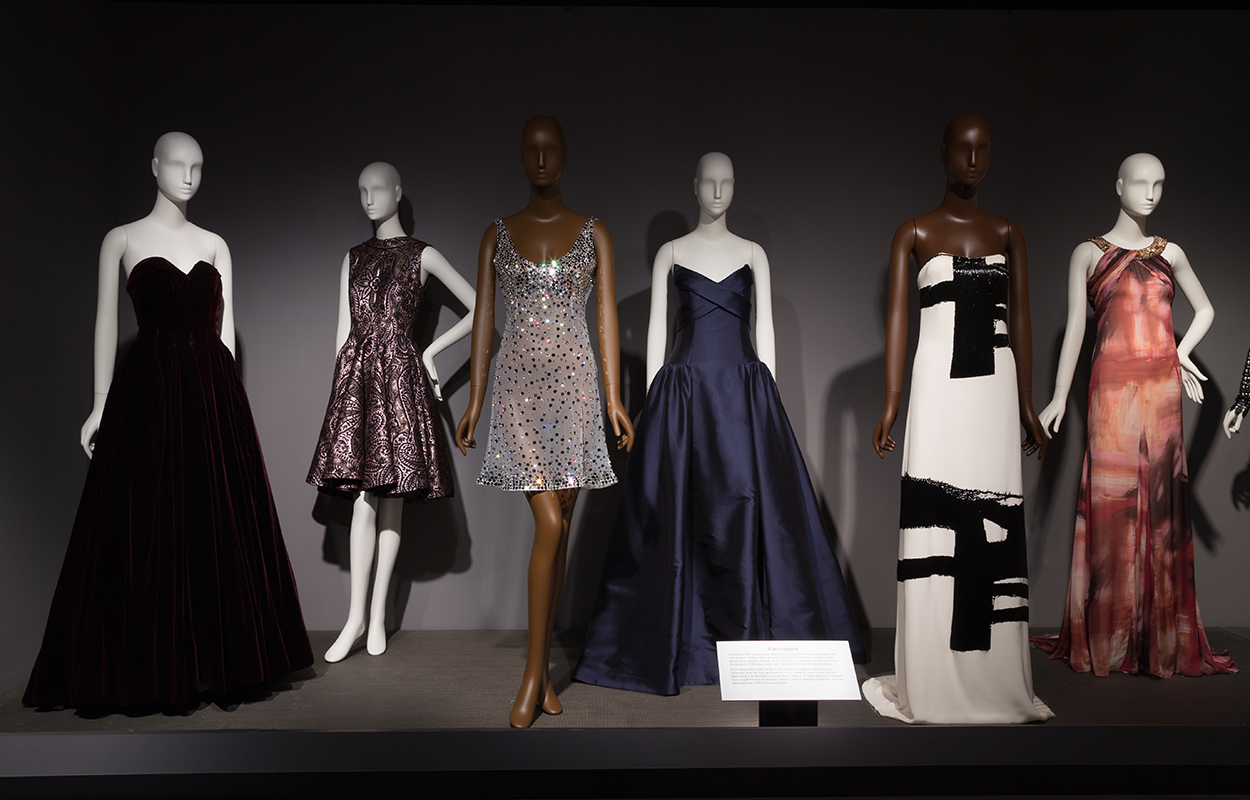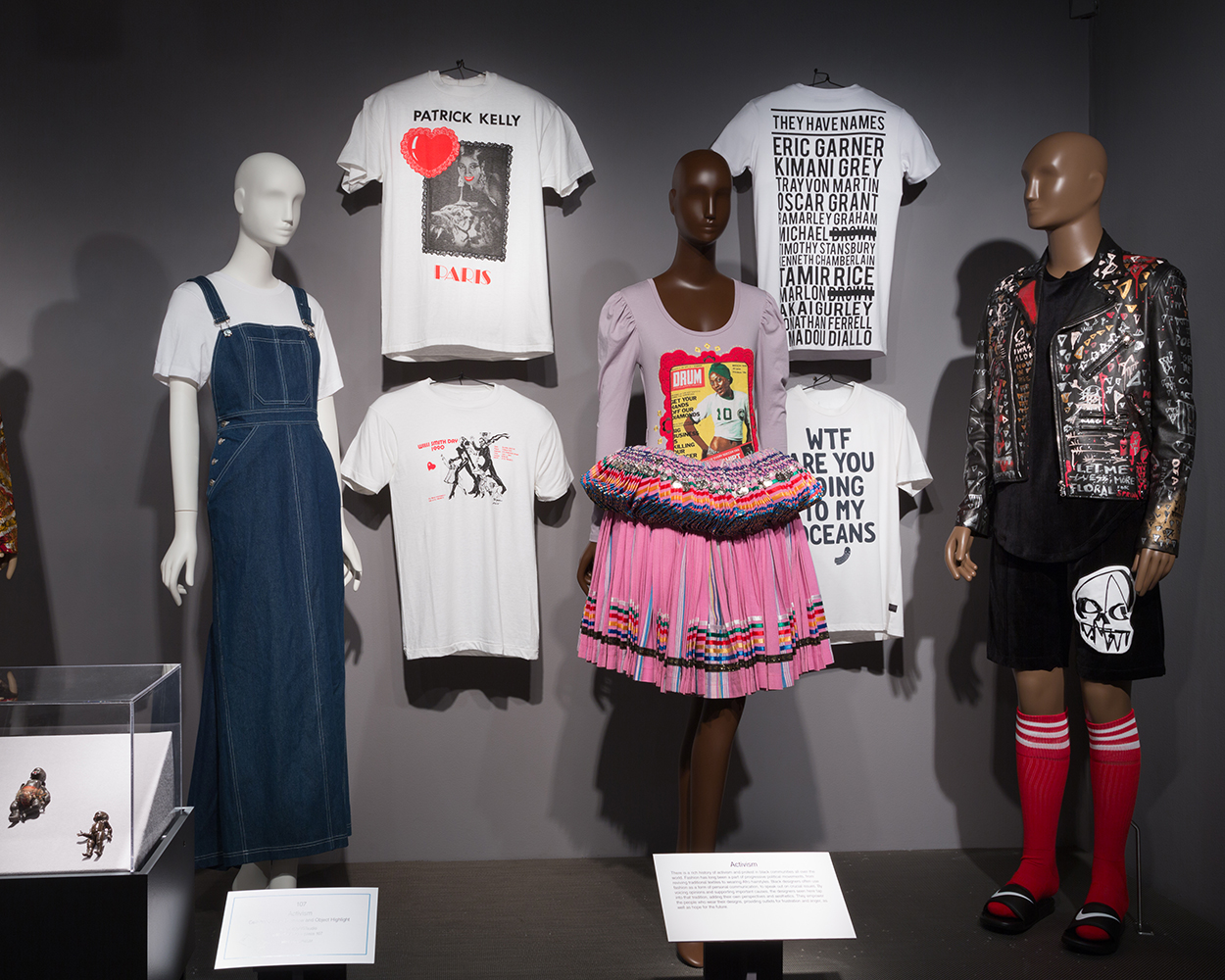A sweeping wedding gown opens “Black Fashion Designers,” a new exhibition at The Museum at FIT on view through May 16. The garment’s delicate detailing speaks for itself, but it’s more remarkable for the woman who made it: Ann Lowe, the Alabama-born great-granddaughter of an enslaved seamstress, and a designer who dressed high society women from the 1930s through the ’60s. Although she maintained a profitable salon on Madison Avenue, dressing du Ponts, Posts, and Rockefellers, Lowe’s designs often went uncredited in publications like Vogue. Even the New York Times failed to properly attribute the silk taffeta dress, which Jacqueline Bouvier wore at her wedding.
A Lasting Legacy
At The Museum at FIT, a show chronicles the achievements and contributions of black fashion designers since the 1950s.
By Shyam Patel February 1, 2016
While the show’s 75 pieces—which include works by Stephen Burrows, Willi Smith, Dapper Dan, and others—mainly reintroduce the overlooked or forgotten work of black designers from the 1950s on, they also expose the designers’ impacts within the greater landscape of the industry. Lowe’s story, in many ways, is at the heart of the exhibition, as it emblematizes the uneven playing field that still exists in fashion— and elsewhere—since the Jim Crow era. Even today, black designers comprise only one percent of the designers featured on Vogue Runway’s extensive online roster.
Of course, assessing black designers’ work solely through the filter of race flattens the nuances of individual careers. The curators, Ariele Elia and Elizabeth Way, were wary of this. “Instead of focusing on a laundry list of black designers, we wanted to look at the types of garments they are known for,” says Elia. “We organized the show thematically, to look at black designers’ roles within the larger fashion industry.” The nine sections delineate traditional classifications, like eveningwear, and also focus on other areas including activism and African influences.

One section highlights the careers of models Pat Cleveland, Naomi Campbell, and Liya Kedebe. Promisingly, casting in the industry today has become more inclusive. AM Casting founder Noah Shelley, who was responsible for the step team at Rick Owens’s spring 2014 show, scouts diverse faces on Instagram. Both Zac Posen and David Hart hired exclusively black models for their fall/winter 2016 collections. Most recently, Rachel Comey’s spring/summer 2017 show was populated with a spectrum of races, ages, and body types.

Still, a single question remains: Are these mere gestures that nod to a transient wave of inclusion, or are more meaningful shifts taking place?
To continue the conversation, we invited fashion designers Eric Gaskins and LaQuan Smith, the founders of their respective eponymous labels, as well as Kerby Jean-Raymond, the founder of Pyer Moss, for a discussion at the Surface offices ahead of the show’s opening.
